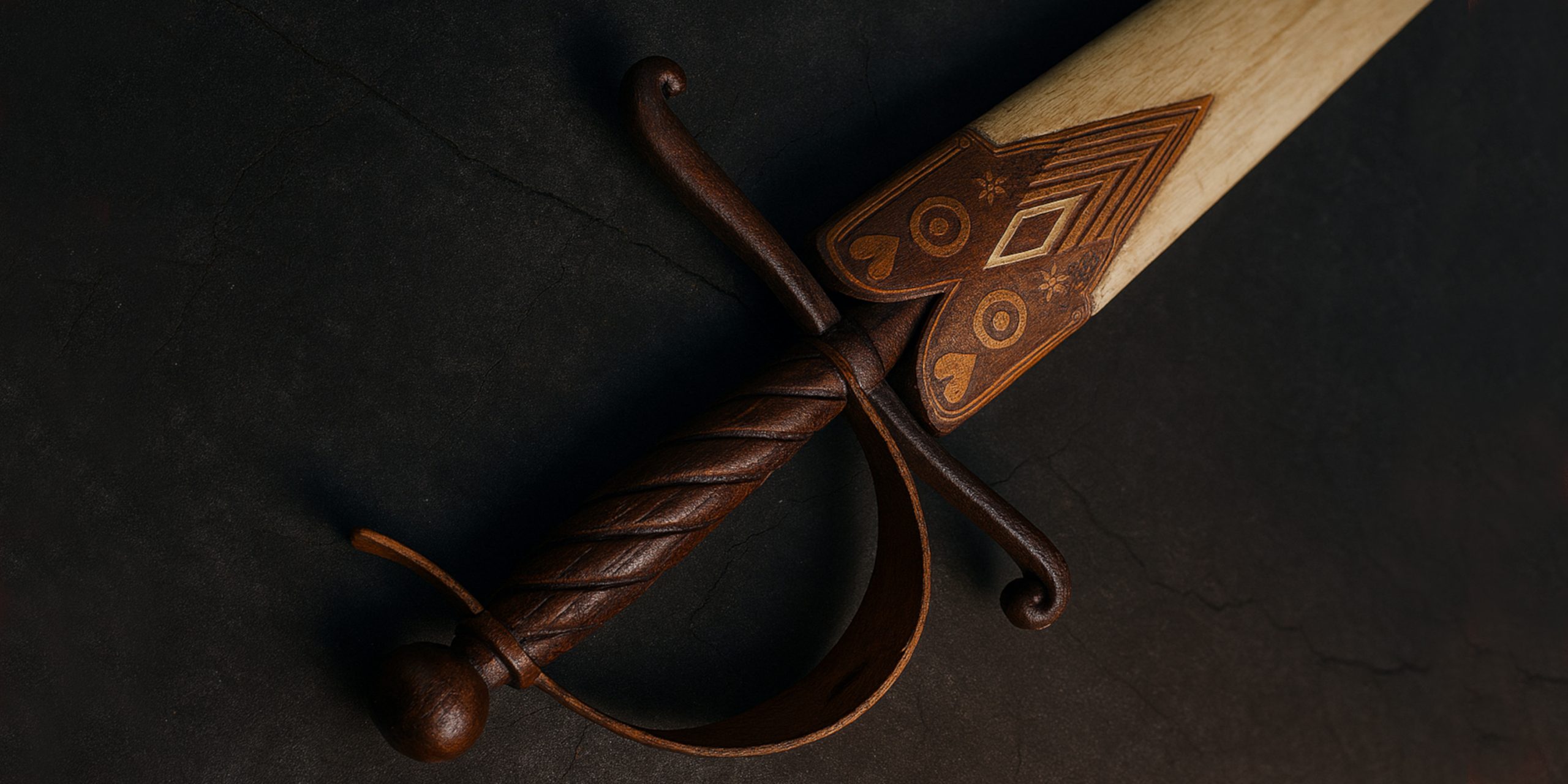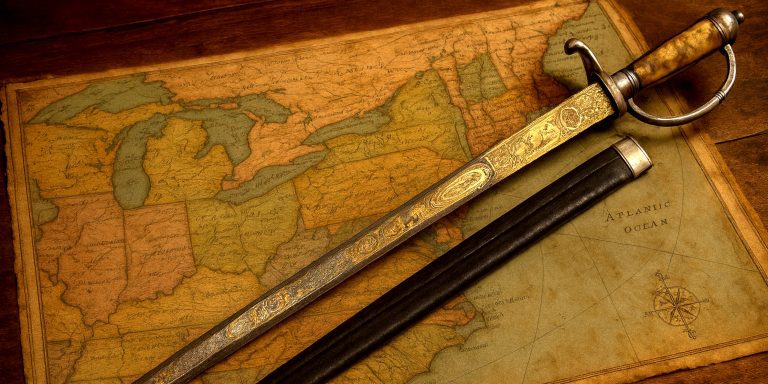
The Inuit bone sword is a rare and culturally distinct weapon crafted by Indigenous Arctic peoples, primarily from whale bone, walrus ivory, or caribou antler. Unlike iron or bronze blades from other regions, these weapons emerged out of necessity in a landscape largely devoid of metal resources. Their construction, style, and use reflect the harsh realities of life in the Arctic, where survival and craftsmanship were tightly intertwined.
Specification
| Feature | Detail |
|---|---|
| Blade Material | Whale bone, walrus ivory, or caribou antler |
| Hilt Material | Bone, antler, wood, sinew-wrapped |
| Length | Typically 50 to 90 cm |
| Blade Shape | Single-edged, tapering, sometimes serrated |
| Edge Treatment | Polished and honed bone edge or inset flint |
| Grip Type | Cylindrical or oval, wrapped in sinew or hide |
| Sheath | Rare; if present, made of hide or fur |
History and Evolution
The Inuit developed bone weapons due to the Arctic’s lack of native metal ores. Swords were not a widespread martial tool like bows, harpoons, or ulu knives, but certain Inuit communities in Greenland and the Canadian Arctic produced them for defence, ceremonial use, or intertribal conflict.
Some blades were reinforced with flint or slate shards embedded along the edge, forming a crude but deadly cutting surface. Others took on shapes similar to wooden or antler club-swords, designed more for blunt trauma or puncture than slicing.
With the introduction of European trade goods in the 18th and 19th centuries, metal blades began to replace bone weapons, and the sword faded from everyday use. Nonetheless, it remains a powerful emblem of Inuit ingenuity.
Advantages and Disadvantages
Advantages:
- Crafted from locally available materials
- Strong cultural and ceremonial value
- Lightweight and adapted for close-range combat
- Resilient in extreme cold (compared to brittle metals in sub-zero temperatures)
Disadvantages:
- Lacked the edge retention and durability of metal
- Ineffective against metal weapons
- Labor-intensive to carve and maintain
- Limited penetration against heavy clothing or hide armour
Comparison with Similar Weapons
| Weapon Type | Material | Region | Functionality | Edge Quality |
|---|---|---|---|---|
| Inuit Bone Sword | Bone/Ivory | Arctic | Ceremonial & defensive | Moderate (or serrated) |
| Macuahuitl | Wood & Obsidian | Mesoamerica | Military use | Extremely sharp but brittle |
| Kiribati Shark Tooth Sword | Wood & Teeth | Micronesia | Combat | Serrated and sharp |
| Bronze Short Sword | Bronze | Eurasia | Military use | Durable and efficient |
Legacy
Though rare, the Inuit bone sword symbolises an era of adaptation and resourcefulness. It embodies how Indigenous communities forged tools not for conquest, but for survival in one of the world’s harshest climates. These swords now serve as cultural artefacts, preserved in museums and collections that value Inuit craftsmanship and oral tradition.
Where to See
You can find authentic Inuit bone swords or similar carved weapons in:
- The Canadian Museum of History (Gatineau, Quebec)
- The British Museum (London)
- The Smithsonian Institution (Washington, D.C.)
- Museums in Nuuk, Greenland, such as the National Museum of Greenland
Many pieces are kept in storage or displayed on rotation due to their fragility.
Collector’s Guide
Authenticity is key. Due to the organic material and regional specificity, these weapons are often mislabelled or poorly preserved. Always consult with specialists in Indigenous or Arctic artefacts.
Condition affects value significantly. Cracks, missing inlays, or repairs can lower interest.
| Auction House | Recent Sale Price Range |
|---|---|
| Bonhams | £1,000 to £3,500 |
| Sotheby’s Indigenous Art | £2,000 to £4,500 |
| Regional Inuit Art Dealers | £800 to £2,000 |
Note: Many reputable auction houses are cautious with Inuit weapons due to cultural heritage concerns. Some pieces may be subject to repatriation.



